|
Score 94/100 (9.4 out of 10)
From Intent to Impact is an interesting, insightful, and eye-opening business book by Monica Diaz, a true champion of diversity and inclusion in the workplace. The book covers many of the advantages of diversity and inclusion in business including better problem-solving, more solutions, more camaraderie, more talent, greater diversity in skills, improved happiness, and increased job satisfaction. And that's just the tip of the iceberg. What we appreciate about this book is that it is actually fun and entertaining to read as well as educational. This educational text actually reads a little bit like a memoir since they come from the author's actual experiences and those of people she knew or met. So, there's a personal angle to it. Diversity comes in a lot of shapes and forms just like people. This book mainly covers racial diversity and LGBTQ+ diversity with great examples for both groups. The key to this book is seeing how change and inclusion comes from the top-down. Leaders, business owners, and policy makers should take it upon themselves to ensure that their talent pool is as diverse and inclusive as possible. At the same time, workers also have the power to push for positive change in a peaceful and civil manner. That's another thing we appreciated about this book: that it really follows in the footsteps of men like Martin Luther King Jr. & Gandhi—people who achieved great change and had their voices heard without resorting to violence and cruelty. They chose peace. They chose to set an example. The author successfully pushes forward the idea that individuals can serve as such an example. Individual workers who advocate for the hiring of or equal pay/treatment of a minority are serving as an example. Individual employers who make an effort to interview people of color or appreciate bilingual/multilingual people also serve as examples. One of the moments that the author continually hearkens back to is when she was first hired and her heavy accent was made an issue by her employer. This seemingly small thing actually has further-reaching consequences. It reflects a fallacy that many have that a person who doesn't speak the dominant language as clearly and fluently as everyone else is viewed as lesser than, inferior, less capable, or less intelligent. Nothing could be further from the truth, and Monica Diaz is actually a perfect example of someone who broke that stereotype. Taking time to learn from people who speak a different language, have different skills/talents, or have different experiences can be the most valuable thing you do as a business person (and as a human being). People are key to everything we do as social animals and as business people. Without people, there is no finance. Without people, there are no products. Without people, there are no sales. Without people, there are no solutions (or problems that need solutions, i.e. services). So, you see why people are so important to everything we do. Diversity in people also leads to diversity in opinions, and diversity in opinions also leads to diversity in ideas. Ultimately, a diversity of ideas leads to more creativity and innovation. This is a must-read business book full of great ideas that can be put into practice! Check it out on Amazon!
0 Comments
Score 95/100 (9.5 out of 10)
Well, this book had an impact on our kids, let us tell you! Mellie the Mermaid is an adorable, educational children's book by Anna Finch, an author who is quickly becoming one of the most prolific children's authors we know. It has a very important lesson for children about caution (being careful)—something parents and teachers are constantly warning children about out of love and concern. Well, there's only so many times you can tell a child “no” or “don't do that” before it starts going in one ear and out the other. It's special and helpful to have that lesson be taught in the form of an entertaining, eye-catching book. And that's what we have here! The book follows Mellie, a cute, spunky little mermaid who is fearless to a fault. She isn't afraid of the clapping clams, the electric eels, or the ringed octopi. She also isn't afraid to venture into the deep waters by herself. That is until she meets a big, scary shark with huge, sharp teeth! Seriously, our kids jumped out of their seats and screamed. We felt like screaming! That shark is terrifying! But that's probably a good thing. It's the kind of emotional reaction that you want when teaching kids about consequences. Sometimes the best way to teach a kid to be careful crossing the road is to show them some roadkill. When you don't listen to your parents and when you take unnecessary risks, bad things can happen. You're not untouchable or invincible, and many kids think they are due to lack of experience. You don't just come back from the dead like a cartoon or video game character. Actions and decisions sometimes have lasting or even permanent consequences. Now, we're not saying that this book is violent or overly scary. It really isn't. And it's adorable and appealing throughout. You could even explain to your kids that the shark is Bruce from Finding Nemo--he doesn't even know his father and fish are friends, not food. It sends the right message to kids, one that could potential save them from harm or injury. This has real-world applications. For example, it's important for kids to know not to wander out by themselves, not to talk to strangers, avoid touching the hot stove, or to look both ways when crossing the street. Fear exists for a reason. It can be bad to be crippled by fear, but it also prevents us from making poor and dangerous choices. The illustrations in this book have a very appealing, hand-painted look. The animals, quite frankly, are adorable (except for maybe the shark). Mellie herself stands out and is just such a cool, appealing character. There are times when the writing is just a little rough. For example, the shipwrecked ship just so happens to be called “Nellie.” So, it is a bit easy for a dyslexic person to get mixed up between the name of the ship and the name of the main character. It is nice to see the author attempt a rhyme scheme that is catchy and appealing to children. We highly recommend this children's book! Check it out on Amazon! Score: 92/100 (9.2 out of 10)
The Polar Bears' Journey is another moving and emotional children's book by Tuula Pere that addresses two major issues: the withering away of a specie's natural habitat and parental love (particularly maternal love). Tuula Pere is one of our best and most prolific children's authors along with Anna Finch and Once Upon a Dance. The shear range and variety of her children's books is mind-boggling. One thing is for certain: Tuula Pere isn't afraid to get a little darker and explore slightly less cheerful themes. That's not to say that there's death or violence in this book, no. This book is clean. It's more so that the tone of this book seems grimmer, darker, and more desperate. It is very clear that these polar bears are struggling to find both food and shelter as well as each other. So, the peril seems real. Most of this book consists of the mother bear finding food for the baby bear (named Nanu) and bringing Nanu on a journey to find his dad, who has been missing for days on a hunting trip. Along the way, they receive assistance from a kind and capable bird called a tern or “path finder bird” who becomes a helpful friend. It is a little bit strange that the “tern” is mentioned briefly with very little explanation of who or what it is and is not shown on a page until about the third time its mentioned. So, we had to look it up on Google. But it wasn't the biggest deal. There's something very niche and unique about this art style. It can seem a bit warped and wonky at times. It has a very hand-drawn, penciled-in look, which has a niche appeal. It's a matter of taste. The colors are subdued and dark—dark blue, dark green, dark yellow, dark red—perhaps best exemplified by Nanu's snow hat and the fishes. It reminds us of lapis lazuli. In fact, that might be the best analogy for the way the art appears. The story itself is captivating and quite tragic. Again, no, there is no death (except the implication that they ate the fish off-page as polar bears do), but it is a bit sad to see that the bears have so little to eat and that they keep running out of land to live and move on. That's the point. Perhaps this book could be used to teach slightly older children about the problems caused by global warming and urbanization (leading to deforestation and loss of habitat). In that sense, it reminds us of The Lorax by Dr. Seuss, at least in terms of its message. This book does seem to end on a hopeful and optimistic note. Teachers and parents may be able to talk to children about some of the issues this book explores. As mentioned, it's also a powerful story about a mother's love as the mother bear is constantly sacrificing to feed and take care of Nanu, even offering to let him ride on her back when he's tired of swimming and to let him eat the only fish. It's also a powerful illustration of a father's love, although he's not physically present much in the book. That's kind of the point. The father bear loved his family so much that he was willing to risk his life, comfort, and safety to find them food every day. That's a lot like what parents go through in real life. Parents are constantly giving up their own time, energy, and comfort for their children. So, there's a lot of beauty to be found in this book. Check it out on Amazon! Score: 93/100 (9.3 out of 10)
Where the Lilacs Bloom Once Again is a moving and culturally significant family history by Roni Rosenthal. It is based on a memoir, letters, scrapbook, and family tree compiled over the years by the author's real-life ancestors. Testimony by other families and individuals involved in these events also contributed to the construction of this text. The author's family lived in Romania during the late 19th and early 20th century. It was a time of intense antisemitism, exacerbated by the rise of both secular communism and Nazism in Eurasia. Nazism and the conquest of the German state placed a dagger to the throats of all Jews living in Europe. Furthermore, the ascension of Stalin and the Soviets—who also held antisemitic views—threatened to push the Jews into lives akin to the slaves of the last century. Romania found itself caught in these historically turbulent times. As a result, Jews like the author's family became targets of derision and persecution. Everything from their businesses to their very lives were threatened by the growing wave of hate. This book captures the misery and tragedy of the times while also displaying the non-war, human element of it. It's easy to see that period in European history dominated by World War I, the Great Depression, World War II, and the Holocaust. Indeed, these events do play major roles in this book. However, those weren't the only things that were happening in that country and at that time. People were still trying to build relationships with other people, take care of their families, start and run businesses, and survive as best they could. People were people. That might sound strange, but today it's easy to look at black & white photos and videos of the time and to see these people as somehow foreign--like figures in a painting. It's easy to forget that these were real people with goals, dreams, ambitions, fears, anxieties, pain, and triumph. These were people who loved (and also hated). In that sense, this book is incredible. It brings to life a time and a place that seem so foreign and distant to the rest of us. This book primarily follows Friddie, a Jewish girl coming of age in the Romania capital of Bucharest. You really get the sense of how small Friddie is compared to the world and the circumstances around her. At the same time, it's impressive to see her assertiveness and individuality, especially when the pressures of her family, the culture, and the over-arching circumstances seem to be against her. Friddie suffers perhaps the greatest in the book, falling in love with a fragrance salesman named Freddy during the critical period between 1938-1940—the start of the war of wars. Friddie finds herself arrested by the government's secret police, imprisoned, tortured, and sexually assaulted for thirteen years. These thirteen years comprise the crux of the book as they see Friddie cling to hope through her brutal imprisonment and the passage of multiple totalitarian regimes. However, Friddie's plight—as perilous as it is—is not the only thing happening during this time. We get an interesting glimpse into the lives of other people involved with Friddie including Mircea, another prisoner who is forced into hard labor by the Soviets, eventually helping to build the Danube Canal. Meanwhile, Rosa, another pillar of the book, learns of the terrible events of the Iasi massacre and the further toll it took on her already devastated family. Rosa, David, and others also experience the Bucharest pogrom, another horrendous massacre of Jews living in the country. These two massacres are news to us. These aren't the kinds of things that most of the Anglo-American public is educated about. After all, in most of our minds, Romania is just some country in Europe where Dracula lived & where Vlad the Impaler came from. Oh, how wrong we were. The author is not afraid to point out this fallacy, showing how big a tourist attraction Transylvania, for example is. Romania, we learn from this book, is a country with a rich history and culture, plagued (during this period) by socio-political turmoil including power struggles between the royals and growing political movements like the communists. We even get a glimpse into the life of one of the king's doctors who nobly refuses to flee into exile with the king so that he can save lives. David's recovery from suffering a brain-injury from an antisemitic attack is very tragic and moving, one of the things that really reeled us in. We also catch a glimpse into the life of Aurica, who suffers a treacherous journey over the ocean to the holy land, Israel. Also of intrigue is the mystery behind Freddy, Friddie's estranged husband and the father of her child. Friddie is compelled to hunt him down in order to learn the truth about him. Lilacs serve as a powerful and beautiful motif in the book, serving as the cause of Friddie and Freddy meeting as well as the flower that Friddie associates with memories of her home—a home that seems like a far away dream at times. This is history. This is how history has been recorded for thousands of years: through written records and word of mouth. Through first-hand accounts of the things that happened. So, we see tremendous value in this book. We would not be surprised to see this quoted on something like the History Channel. Check it out on Amazon! 92+/100 (9.2+ out of 10)
Born to Survive is a powerful, emotional, and moving autobiography by Kylie-Anne Evans that explores her turbulent life and relationships. This new edition greatly impressed us. Whatever happened with the editing and revising really made a huge difference. This is now a solid, good book about a very inspiring person—a survivor in every sense of the word. Something that really stands out in this book is Kylie-Anne's impressive memory. The author seems to have a photographic memory of just about everything—from the way something felt in her hands to the way something smelled. It's visceral. While there appears to be an overarching theme surrounding the author's quest to find true love and to care for her children in a way that she wasn't cared for, it's the little, subtle things that we appreciate the most. For example, there are little side stories in here that had us captivated. You really get a sense of Australia (where most of this book takes place) and what it's like to be surrounded by such exotic fauna. For example, there's a time when the author's dad runs over a snake on the road that then suspiciously goes missing when they drive past it again. There's the time (or, rather, two times) when the author encounters a spider the “size of a plate!” Everyone who has a fear of creepy crawlies can relate! Australia itself is a character in this story, and we greatly appreciated that. The writing is significantly improved from earlier versions of this book. It seems as though you can really see, sense, and feel the author's growth as a person as this book goes on. That was missing a little in the earlier version, which seemed more like a series of unfortunate events detailed verbatim. This time around, it's like these unfortunate events are building blocks and learning experiences, as they should be. You can see the author grow and improve, becoming more independent, self-sufficient, and driven. It's very inspiring! For instance, we have the author's realization that “people come, people go.” Now, this book could come with every trigger warning in the book. Be warned. There are instances of child abuse, sexual abuse, domestic abuse, drug abuse/addiction, death (including that of an newborn), and more. Similar to something like When to Run, Born Scared or Fictionally Nonfiction, the book is filled to the brim with trauma. And it hits hard. In particular, the authors relationships with their father, Scott, Luke, and Jacob are incredibly fascinating, albeit uncomfortable at times. You can tell that the author really loved Jacob in particular, and you can see the spark in that relationship. It's also easy to sympathize with Luke, really the first man to treat the author with any kind of respect or dignity. Scott is terrifying at times, but it's interesting to read about times when he was vaguely concerned or emotional about things. Similar to Their Eyes Were Watching God, you see the protagonist learn from and grow from every experience and relationship. If you can stomach stories of emotional trauma and abuse, this book might really pull on your heartstrings. Check it out on Amazon! Score: 95/100 (9.5 out of 10)
Am I my brother's keeper? That question reverberates in the background of this enthralling, mesmerizing story. This novel follows two identical twin brothers, Gavin and Devon, who couldn't be more unlike each other in terms of personalities. In fact, Gavin comes up with the creative analogy that they're “mirror twins”--opposite or backwards of one another like objects in a mirror. This also gives the book its title. Although brotherhood is at the center of the book, other themes and topics are also prevalent including family, individualism, mental illness, crime, addiction, and even (believe it or not) entrepreneurship. There's even a travel aspect to this book since much of the story takes place in a very exotic and exciting place. More on that later. Whenever you're dealing with twins in a work of fiction, one of two things is inevitably going to happen: their twin-power is going to allow them to have an almost supernatural advantage over opponent and they're going to work together to solve a problem OR the two are going to become mortal enemies due to differences in ideology. This is more of the latter. We can think of some of our favorite twins in fiction—Vash & Knives (Trigun), Man in Black & Jacob (Lost), and Solid Snake & Liquid Snake (Metal Gear Solid)—and they all have a few things in common: they strongly dislike, despise, or even hate each other yet they seemingly can't exist without the other. There's something about brothers, especially twin brothers, that adds an extra layer of emotion to a conflict. This book is frustrating, but we mean that in a good way. It was frustrating because of how tense it was, and tension is very good for fiction. Also, it's not frustrating because the heroes make “stupid decisions,” it's that they make smart decisions yet bad things happen to them anyway. Our main protagonist is Gavin, the good, level-headed, humble, yet far less flashy brother. Gavin may suffer from a kind of inferiority complex since he is always treated as being lesser than his twin both physically and intellectually. This is largely the fault of their dad, Tony, who has his own set of issues including likely abusive tendencies toward the children and his wife. Gavin is smaller than Devon and called “little brother” despite only being 10 minutes younger. It is kind of adorable that they excuse Gavin's smaller size by saying that Devon ate all the nutrients in the womb. At the same time, this does set a precedence for a reoccurring theme: Devon's parasitic nature. Devon even refers to his own little brother as food, calling him “little Twinkie.” This really goes to show how superior Devon feels to Gavin. While Gavin goes to Culinary Institute of America to become a chef, Devon goes to Harvard to presumably become the greatest and the smartest at anything and everything he wants. However, while Gavin stays on the straight and narrow, Devon falls into a life of recklessness, addiction, and crime. Devon, in a lot of ways, is the main villain and antagonist of this book, even with Tony and the mob involved. Devon is usually the one directly bringing danger and despair into the lives of Gavin and their family. This might be the most accurate and realistic character work we've ever read. Both Gavin and Devon seem like real people. Even the events and actions are random and unpredictable like real-life is. Here's a hint: anything can happen to anyone at any time, and any character can die at any time. But beside that, Devon's mental illness is handled with so much tact and care. Devon has what's called Malignant Narcissistic Personality Disorder, possibly caused by a car accident and physical trauma earlier in life. In addition to that, his organs are on the opposite side of his body from where they should be. To keep him alive and allow or surgical work, Gavin used to have to donate blood constantly. Devon's Narcissistic Disorder is apparent and clear throughout the whole book, dominating the way he acts and the way he views the world (and Gavin). He'll often say that he's better, smarter, stronger, and “knows more” than everyone else. He also often belittles everyone else. However, it is tragic to think what kind of person he would've been if he'd been healthy. Are you born bad or are we made? Well, you could definitely make an argument that Devon made a lot of bad choices, yet a lot were made before he ever opened his eyes or spoke a word. It's hard to sympathize with him because he's such a nasty, unlikable person, yet a part of you can't help but hope for a resolution between the two brothers. One of the most beautiful things that happens in this book involves two abandoned and dying puppies that Gavin comes into possession of, Patches and Beggar. Incredibly, they parallel the two main characters, also brothers who are damaged both inside and out by circumstances. Later on, the book ventures to Hawaii on the island of Kauai, and we couldn't help but be impressed by the amount of research that the author put into doing the location justice. Everything from the names, the language, the locations, the culture were spot-on. All in all, we can highly recommend this book. It has a slow start, but it's worth it in the end. Check it out on Amazon! |
Archives
July 2024
Categories |

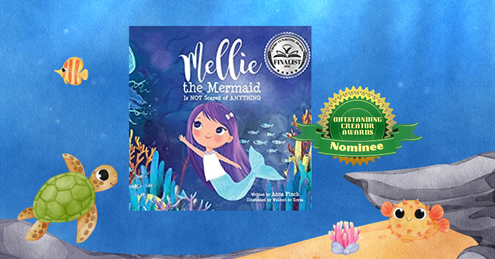
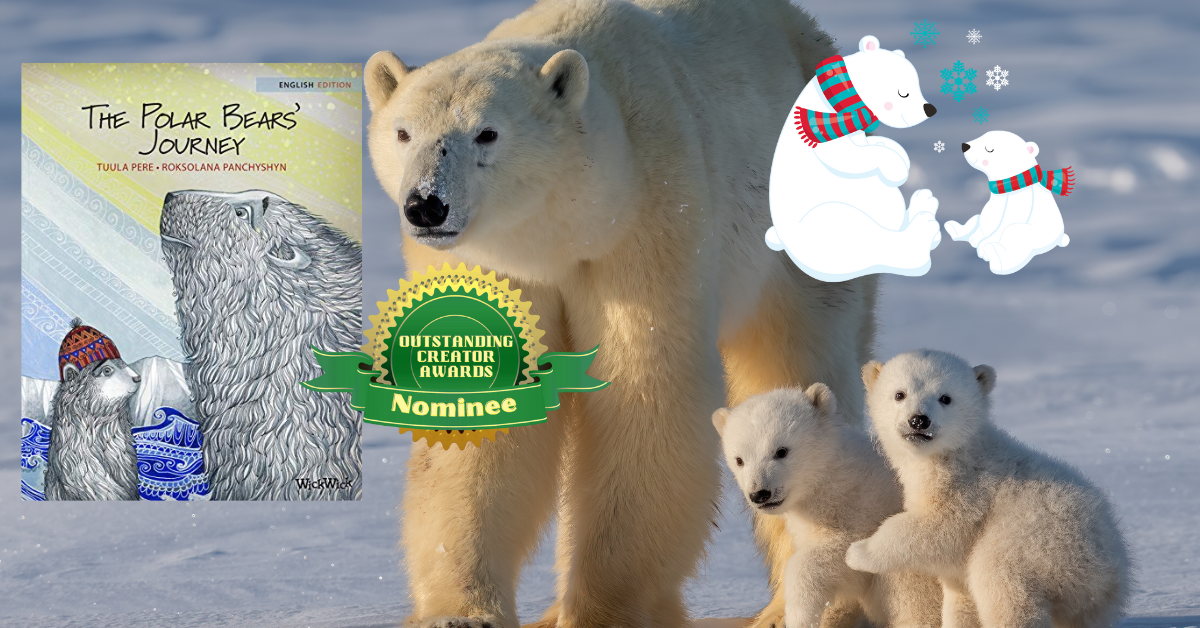
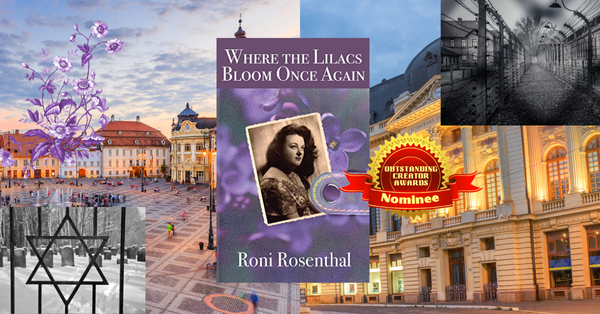
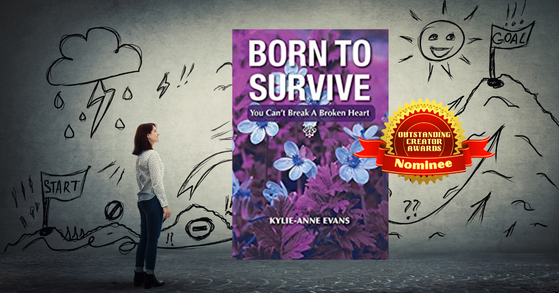
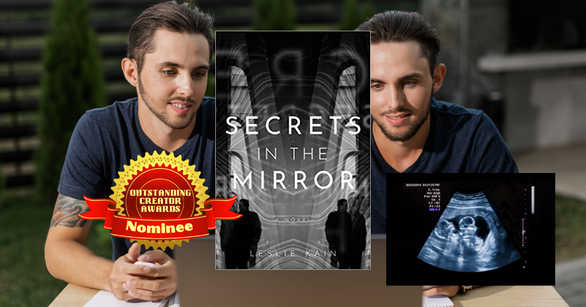
 RSS Feed
RSS Feed